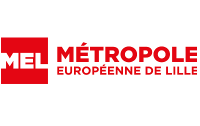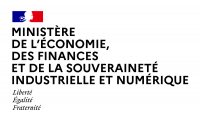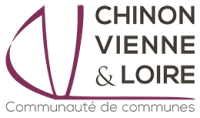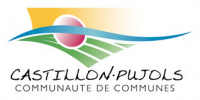 Centre National du Cinéma (CNC)
Centre National du Cinéma (CNC) Favoriser la production d’œuvres audiovisuelles destinées à être diffusées sur les chaînes de télévision ou sur des services de médias audiovisuels.
Pour accéder aux aides publiques, la première étape indispensable est la définition d'un projet clair et structuré. Voici les différents types de projets pouvant bénéficier de ces soutiens, illustrant la diversité des ambitions et des besoins des entreprises.
Investissements
Les projets d'investissement visent l'acquisition de biens matériels ou immatériels pour augmenter la capacité de production ou améliorer les processus existants. Cela peut inclure l'achat de machines, d'équipements ou de systèmes informatiques.
Investissement immobilier
Ces projets concernent l'achat, la construction ou la rénovation de biens immobiliers destinés à l'usage de l'entreprise. Ils peuvent viser à étendre l'espace de production, de vente ou les bureaux.
Développement commercial & Marketing
Il s'agit de projets visant à accroître l'activité commerciale de l'entreprise, comme l'expansion sur de nouveaux marchés, le lancement de nouveaux produits ou services, ou la mise en place de stratégies commerciales innovantes.
Les projets de marketing visent à améliorer la visibilité et l'attractivité de l'entreprise ou de ses produits. Cela peut inclure des campagnes publicitaires, le développement d'outils de communication, ou la présence sur des salons professionnels.
Financement global & trésorerie
Ces projets cherchent à sécuriser la situation financière de l'entreprise, en assurant un financement stable ou en palliant des besoins spécifiques de trésorerie pour soutenir l'activité.
Innovation
Les projets innovants sont ceux qui développent de nouveaux produits, services, ou procédés de fabrication. Ils peuvent également concerner l'adoption de technologies de pointe ou la recherche et développement (R&D).
International
L'internationalisation comprend les projets visant à exporter ou à s'implanter à l'étranger, afin de diversifier les marchés et de saisir de nouvelles opportunités commerciales.
Transition écologique
Ces projets visent à réduire l'empreinte environnementale de l'entreprise, à travers l'adoption de pratiques plus durables, l'amélioration de l'efficacité énergétique, ou le recours à des énergies renouvelables.
Transition numérique
La digitalisation des entreprises à travers l'intégration de solutions numériques avancées (gestion de la relation client, automatisation des processus, commerce électronique) pour améliorer la productivité et l'efficacité.
Plan France 2030
Il s'agit de projets alignés sur les objectifs du Plan France 2030, axé sur l'innovation et le développement de technologies et d'industries d'avenir, soutenant la compétitivité économique et l'emploi.
Cession Transmission
Les projets de cession ou de transmission concernent le changement de propriétaire d'une entreprise, que ce soit pour des raisons de retraite, de réorientation professionnelle ou de vente.
Création Reprise
Ce type de projet inclut la mise en place d'une nouvelle entreprise ou la reprise d'une activité existante, nécessitant un soutien au démarrage ou à la transition.
Difficultés financières
Projets visant à surmonter des problèmes financiers spécifiques, à travers des mécanismes de soutien ciblés pour assurer la continuité de l'activité.
Recrutement et formation
Les projets axés sur le recrutement de nouveaux talents ou sur la formation du personnel pour développer les compétences et répondre aux besoins évolutifs de l'entreprise.
Chaque type de projet peut ouvrir droit à des aides spécifiques, qu'il s'agisse de subventions, de prêts à taux préférentiels, de garanties, ou de dispositifs fiscaux incitatifs. Il est crucial d'identifier clairement son projet et de se renseigner sur les aides disponibles pour maximiser ses chances de succès.
Lorsque l'on n'a pas encore d'idée précise de projet en tête, rester à l'affût des opportunités d'aides disponibles peut se révéler être une stratégie judicieuse. En effet, les institutions financières et divers organismes proposent régulièrement des aides, des subventions et des incitations financières destinées à soutenir le développement économique et l'innovation au sein des entreprises. Chaque semaine notre base de données connaît entre 25 et 100 mises à jour.
Se tenir informé des différentes aides disponibles peut non seulement fournir l'inspiration nécessaire pour lancer de nouveaux projets, mais également permettre de détecter des opportunités alignées avec les compétences et les ambitions de l'entreprise. Cela peut aboutir à la concrétisation de projets bénéfiques, tant sur le plan du développement interne que de l'expansion sur de nouveaux marchés ou secteurs. Profiter d'aides spécifiques peut offrir un avantage compétitif, notamment en permettant d'accéder à de nouvelles technologies ou de se positionner sur des marchés émergents.
Comment rester à l'affût des opportunités d'aides ?
Abonnement aux newsletters spécialisées : De nombreux sites web et d’institutions proposent des newsletters régulières informant des dernières aides et des subventions disponibles.
Participation à des événements et salons professionnels : Ces événements sont souvent l'occasion de rencontrer des conseillers et des experts qui peuvent vous informer sur les dernières aides disponibles.
Consultation des plateformes gouvernementales et institutionnelles : Les sites officiels du gouvernement ou des institutions européennes, par exemple, recensent souvent les aides disponibles pour les entreprises.
Réseautage avec d'autres entrepreneurs : Les échanges avec d'autres dirigeants d'entreprise peuvent être une source précieuse d'informations sur les opportunités d'aides et de financement.
Mes Aides Publiques Infogreffe propose une solution de veille automatisée basée sur votre SIRET et une liste de thématique qui vous intéresse. Vous pouvez donc rester à l’affût des opportunités et ne rater aucuns dispositifs d’aides !

 Centre National du Cinéma (CNC)
Centre National du Cinéma (CNC) Favoriser la production d’œuvres audiovisuelles destinées à être diffusées sur les chaînes de télévision ou sur des services de médias audiovisuels.
 Métropole Européenne de Lille - MEL
Métropole Européenne de Lille - MEL La MEL (Métropole Européenne de Lille) soutient le développement de l’Économie Sociale et Solidaire (ESS) avec l'appel à projets permanent Entreprendre Autrement.
 Communauté de Communes des Portes du Haut-Doubs
Communauté de Communes des Portes du Haut-Doubs Favoriser le développement touristique du territoire.
 Ministère de l’Economie, des Finances, et de la Souveraineté industrielle et numérique
Ministère de l’Economie, des Finances, et de la Souveraineté industrielle et numérique Limiter la hausse du prix de l'électricité pour les TPE. Le bouclier tarifaire sera diminué progressivement jusqu'à son arrêt en février 2025.
 Direction Départementale des Finances Publiques
Direction Départementale des Finances Publiques Le chef d'entreprise qui cède son entreprise en pleine propriété à un de ses salariés ou à un membre de sa famille, le repreneur peut, sous certaines conditions, bénéficier d'un abattement sur les droits de mutation
 Communauté de Communes Chinon Vienne et Loire
Communauté de Communes Chinon Vienne et Loire Favoriser le maintien et la création d’emploi ; Favoriser la création, le développement et la reprise – transmission des petites entreprises ; Favoriser la création d’activités non présentes sur le territoire ; Favoriser le maintien d’activ...
 Communauté de Communes Castillon-Pujols
Communauté de Communes Castillon-Pujols Favoriser les investissements des TPE.
 Communauté de Communes Castillon-Pujols
Communauté de Communes Castillon-Pujols Favoriser l’implantation et le développement des entreprises par une aide à l’investissement de matériel.
 Communauté de Communes de de Freyming-Merlebach
Communauté de Communes de de Freyming-Merlebach Favoriser le reprise du commerce en centre ville ou centre bourg. Ce dispositif est mobilisable jusqu'au 31 décembre 2024.
 Réseau Entreprendre Haute-Savoie
Réseau Entreprendre Haute-Savoie Faire émerger et réussir des créateurs et repreneurs de PME créatrices d'emplois et à fort potentiel de développement et vous permettre d'acquérir et consolider leurs talents de chef d'entreprise avec : Un accompagnement gratuit, personnali...